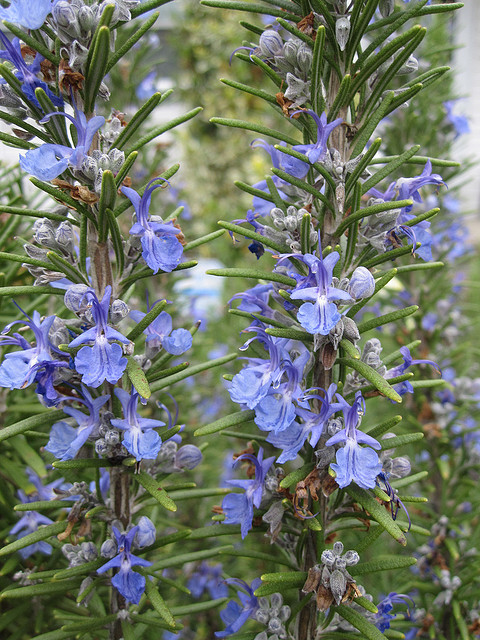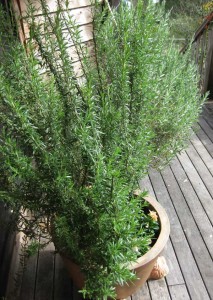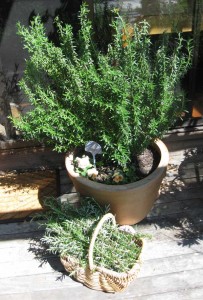Remember the rosemary
After killing my rosemary plant through enthusiastic over-harvesting, I was alarmed to discover that a replacement was not readily available: the recent wet weather had not been kind to the young plants in nurseries. Suddenly, I needed rosemary in nearly everything I wanted to cook and there was none to be had.
It made me realise what an integral part of my garden and kitchen this tough, aromatic herb is. A few sprigs under roast lamb add a sensational flavour dimension; marinated cubes of lamb can be threaded onto rosemary twig “skewers” (pierce the meat first with a metal or bamboo skewer) for a great barbecue dish; try sliced potato, sea salt and rosemary for a sensational focaccia topping; and my favourite quiche by far is roasted pumpkin, feta and rosemary.
Image: Photo by tobyotter from Flickr, shared under a Creative Commons licence.
Growing conditions
As rosemary originated in the Mediterranean region; it prefers a warm, dry climate and well-drained, slightly alkaline soil. Plant it in full sun or a semi-shaded spot. Where I live in the sub-tropics rosemary can suffer quite a bit through the wet season so needs the drainage to be excellent. It dislikes acid soils so needs the pH adjusted with lime. My best success has been planting it in a large terracotta pot and then moving it under the eaves during the heavy rain periods. It will never get to the venerable age and hedge-like size of a cool temperate or Mediterranean climate rosemary but it is enough to keep this cook happy.
Pruning
Ideally, leave the plants for two years before harvesting the aromatic leaves. Rosemary is slow-growing, but once established, benefits from regular pruning. You can take the plant back to half its original size and it will bounce right back. Prune when flowering has finished; using sharp, clean secateurs, start with the top and centre and work your way out to the sides. Trimmings can be used for cooking, in hair treatments or to propagate new plants. Heels of rosemary – where a stem has contacted the ground and developed roots – can be cut off and popped straight into potting mix. If you end up with lots of propagating pieces, you may want to consider a rosemary hedge in your garden – the dark green foliage and pale mauve flowers make a lovely backdrop for other herbs and flowers.
Harvesting
I generally use it fresh but it is easily dried. Simply cut small bunches and hang upside down in a warm, dark, dry place. Fresh sprigs can be used to flavour olive oil.
Tags: herbs, maintenance
Posted in Organic Gardening






It’s hard to imagine killing rosemary down here in Victoria! Mine grows like crazy and every year I reluctantly hack huge sections off to stop it falling over.